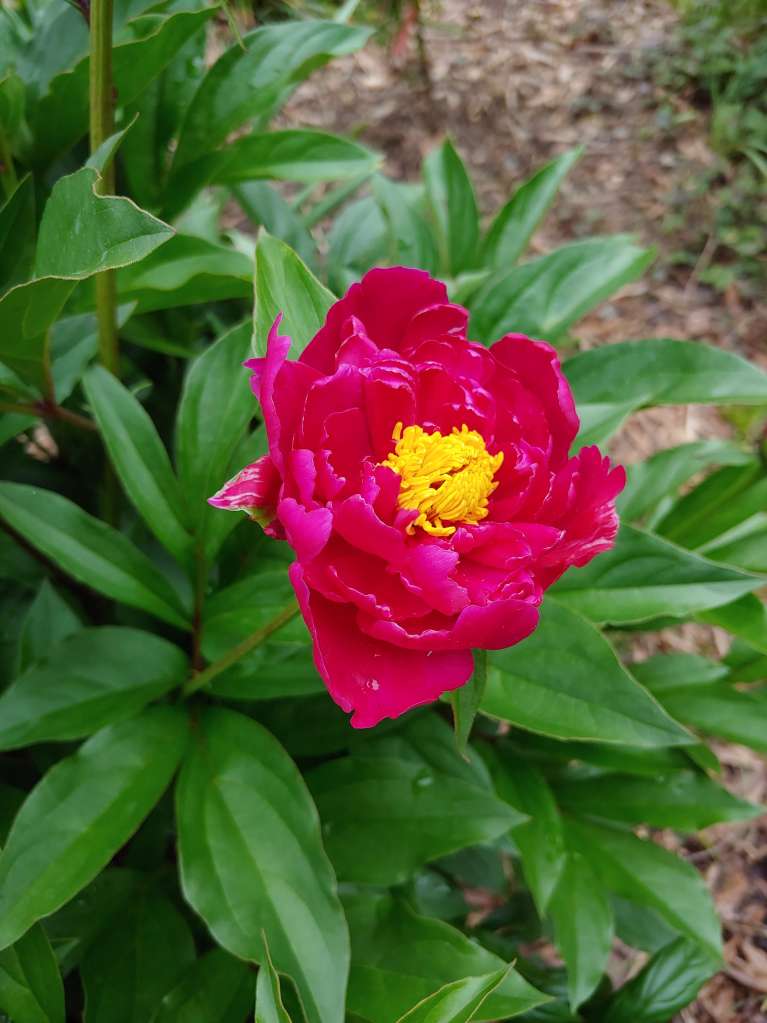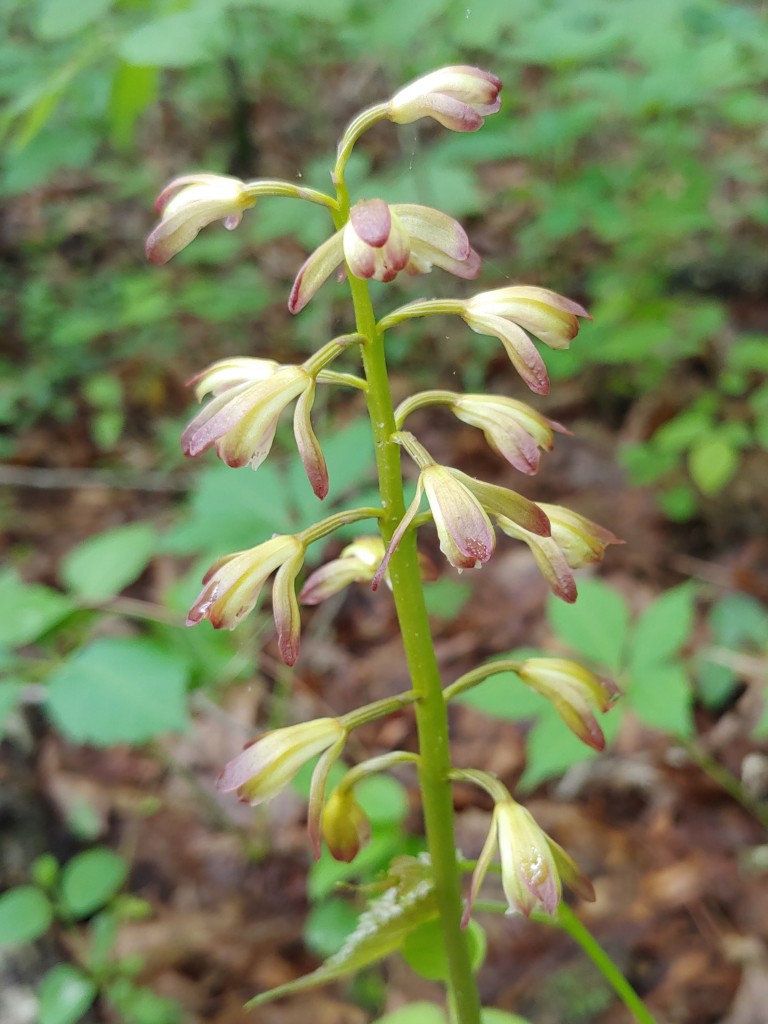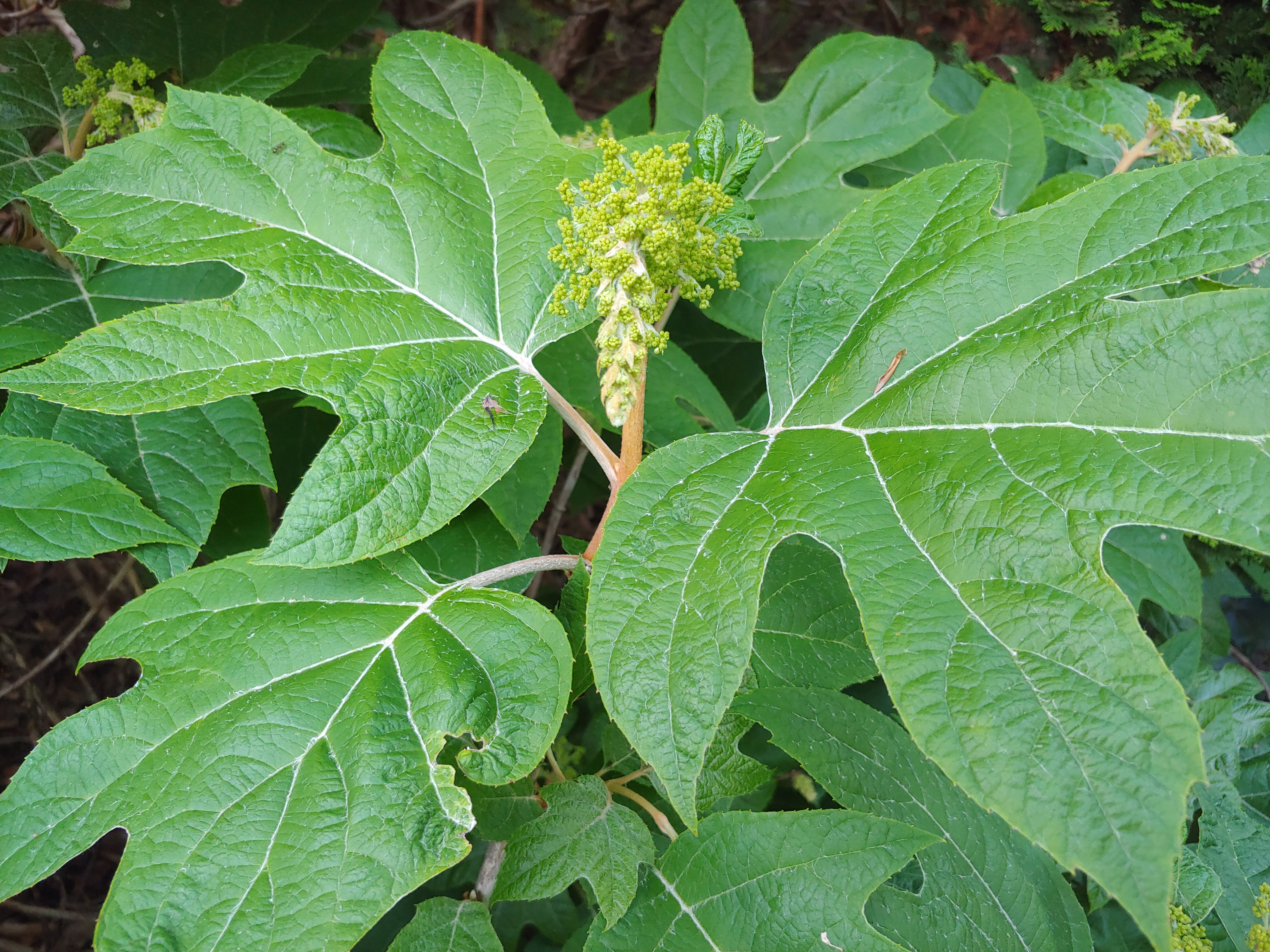Drenching rains now date back twelve continuous months. I vaguely recall a brief dry spell (maybe two weeks) somewhere in there, but instead of exposed soils cracking in the heat of July there was mud through the summer. The number of trees and shrubs lost in the deluges is distressing, and I only hope that this is not some part of the change of climate that will be the new normal.

Gardeners are prone to whining about any inconvenient weather, and never mind that this pouting provides no comfort, and certainly does no good. From a purely scientific approach, the end of this rainy pattern is long overdue, and when it finally turns I’ll be happy to see it go.

After months of avoiding the swampy back third of the garden to limit damage, trenches have been dug that are mostly channeling water so that the area can now be walked on. And, while it is too early to tell for certain, I believe that trees planted to replace dead dogwoods and a Japanese maple have been elevated above the worst of the muck. But, not if there’s an additional thirty-five inches of rain again this year, and at least locally we’re not off to a good start (up 8.5 inches at my place as of mid May).

The trenches bordering planting beds, and one down the middle of the small section of lawn, are a bit unsightly, but not compared to dead dogwoods, so I’ll live with the canals for a while, and if the rains stop they’re easier filled in than dug.

And, again this May, leaves of Oakleaf hydrangeas (Hydrangea quercifolia, above) are a third larger than in a drier spring, and in the part of the garden that should be dry shade, with shallow maple and tulip poplar roots, everything is thriving. So, my complaints are limited to a relatively small area of the garden, and while I accept that mild traumas of some sort are to be expected regularly, I am more than ready to move onto some other natural disaster.
Dave – I too am happy for the rain but I am concerned about the lawn – I did a weed/feed in April that worked well, applied grub control about 2 weeks ago (recommendations were to apply by Memorial Day), and have been mowing very high. The lawn appears healthy but I see some browning below the top cut – is there another “feed” that I should be applying or am I just over-reacting?
thanks
My overly shaded lawn is the worst in the neighborhood, also due to neglect since I’d be thrilled if it all died, and then I’d have a good excuse to turn it into garden. However, with abundant soil moisture there is much greater risk in providing too much nitrogen, spurring too much growth than letting the lawn run a bit lean. There are a number of lawn grass diseases caused by too much growth, or from too much moisture, so it’s best not to contribute to problem by pushing more growth than a wet spring already encourages.
Thanks- sounds like I need to pray for more sun 🙃 – appreciate your help.
In 8 – 10 years, I never had powdery mildew on my phlox, although I understand it is quite common. With all the rain and below normal temperatures we had this spring, I got the phlox mildew this year.
Rain for every month of the year would be dreadful. I happen to really like rain, but that is because I am in a chaparral climate. (Well, this is not chaparral right here, but right nearby.) Rain is celebrated. By the time it gets old at the end of winter, it stops until next autumn.